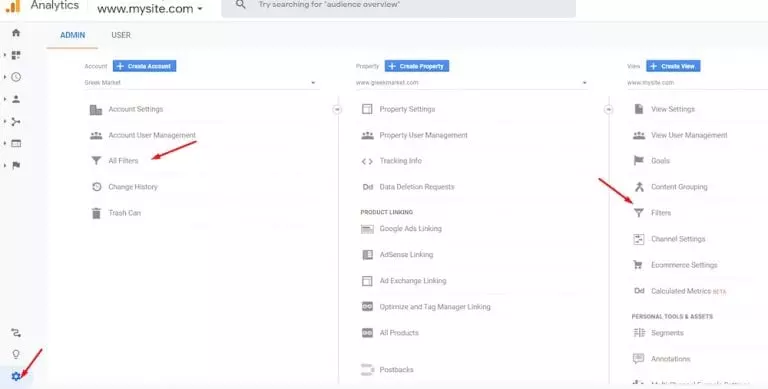
Options for Filtering Data in Google Analytics – Would you like to know what are the options for filtering or refining data in Google Analytics? That’s exactly what we are going to inform you in this blog post.
In any professional domain, insights are important for completing the puzzle in decision-making. Without the right information, making decisions can result in damage to a firm’s reputation or monetary loss.
Google Analytics is a web analytics application that comes with a rich set of features that allow you to filter and polish your data.
This blog is about what are the options for filtering in detail, that will assist you in optimizing your data analysis and reporting. -Options for Filtering Data in Google Analytics – Options for Filtering Data in Google Analytics
Understanding Data Filtering in Google Analytics
Options for Filtering Data in Google Analytics – This action can also be termed as creating segments of your data that can assist you scope or focus on the specific parts of data that you wish to analyze.
Different types of filters are provided by Google Analytics for you to apply extracts from your data accurately.
Types of data filters
Predefined filters
Predefined filters in Google Analytics are filters that you can access already made and created which can be used over your data.
Such filters have defined purposes like excluding filters for internal traffic, referral spam, or specific subdomains. – Options for Filtering Data in Google Analytics
How Automatically Created Tracking Measures Work
Surpasses the Filters for Simpler Collection of Information
Advanced filtering techniques are used by Google in the case of Custom Filers to fill particular criteria.
All of these allow the user to define their own conditions in dimensions or metrics.
Implementing Advanced Tracking Measures
Understanding segmentation of view filtering
Segments filters are set at the view settings in GA, in this case Google Analytics.
They are aimed at filtering data so that the results you get reflect reality.
Basic Information Filter Application Guide
Deciding referral spam safety measures
Referral spams can alter the inputs of the data resulting in inaccurate models of the sources of traffic.
Learn how to implement the filters in place that overrule spammy referrals that are used to mask the true traffic sources.
Filtering out internal IP addresses
Setting up a filter to eliminate internal user IP addresses representative of your organization’s employees or devices ensures accurate user behaviour data is recorded.
Advanced-Data Filtering Techniques
Focus Using Regular Expressions (Regex) in Google Analytics
To manipulate and match text, regular expressions (regex) can be powerful patterns.
In Google Analytics, advanced filters can be created to match URL patterns or query parameters using regex.
Advanced Filters
Regular expressions give you the opportunity to take those regular customized filters into advanced modified ones that exceed the limits of ordinary ones.
Advanced filters aid in complex segmentation, excluding specific user segments, and combining filters to set up conditions. – Options for Filtering Data in Google Analytics
Best Ways To Filter Data
Staying away from common mistakes
Misconfiguring filters and filter retroactivity can lead to risks that alter data filtration and can deliver inaccurate filtered data.
Best Practices provide enablement towards data integrity.
Testing And Filter Validation
For sensitive data, it’s crucial to apply those specific filters after they have been tested and validated.
Learn how to test filters’ validation and track its activity to confirm if it genuinely works.
Monitoring And Altering The Filters
Periodic filters activity checking
Periodic activity checking is required for filters as they may lose their accuracy and effectiveness.
Check filter activity periodically and alter them to fix the filter settings.
Filter Order Considerations
The arrangement of filters can either enhance or corrupt the accuracy of your data.
Focus on the considerations for filter order and the order in which multiple filters are applied to prevent clashes or unintended exclusion of data sets.
Final Thoughts
Options for Filtering Data in Google Analytics – Throughout this article you have learned on what is included in the filtering data in Google Analytics, from the simple to the intricate aspects.
Filtering of data, also known as data cleansing, allows staying on top of things and making good decisions regarding how to allocate resources in a more efficient way.
If these techniques of proper data filtering are implemented, the data reported in Google Analytics will be of much higher quality than before and the reporting and analysis will be much more accurate. – Options for Filtering Data in Google Analytics
Got questions about our Digital Marketing Course? Click here to get all the details!
Looking for expert services to boost your company? Click here, and let’s collaborate!
Curious about our reputation? Check out our Google My Business profile—click here